01 Oct Marquesas Islands — Vale of the Typee
I first heard about Nuku Hiva in the ninth grade. From Herman Melville.
In 1842, fed up with the life of a whaler, he and a fellow sailor named Toby jumped ship on Nuku Hiva. Then headed up a mountain to escape recapture, meaning to descend into a peaceful valley they’d heard about on the far side of the island. They made a wrong turn, shinnied down beside a waterfall tumbling over a very steep cliff, and landed among tattooed cannibals in the Vale of the Typee, one of whom was the winsome Fayaway.
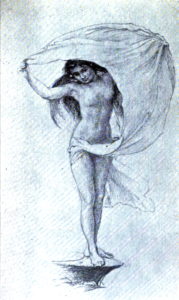
As lost loves go, Fayaway was top of the line and an inspiration to any nineteenth-century book illustrator, or twentieth-century teen-aged boy. The book that came out of that experience turned Melville famous. And me into a lifelong fan of islands my grownup self was pretty sure aren’t still there.
Somewhere while Charlotte and Sam and Peg and I were traveling in the Marquesas on a Chinese vessel that was half freighter and half cruise ship, we landed on Nuku Hiva. Melville, I thought. Cannibals. Tattoos. Breadfruit, coconuts, and the beauteous Fayaway.
We made our way inland by bus and it was all pretty much the way Melville said, except for the Fayaway part which, pretty much everybody agrees, never actually happened. At least the bit about climbing into a canoe with Melville and paddling around a lake . . . there being no lakes in the Vale of the Typee. Or anywhere else in all of Nuku Hiva. But the rest of the story turned out to be true. As true, anyway, as travel accounts by novelists tend to be.
Despite all the scoffing by authorities who never left their armchairs that it couldn’t possibility have been the way Melville said, Toby showed up in the person of a Tobias Greene and announced that, yep, that’s how he remembered it. Then the captain of the whale ship Acushnet filed an affidavit that, yes, a Herman Melville and a Tobias Greene had indeed jumped ship on Nuku Hiva.
And there’s physical evidence, too. The view from the mountain looking back on the bay was the way Melville described.
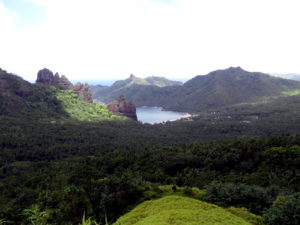
As was the cliff he and Toby would have had to descend.
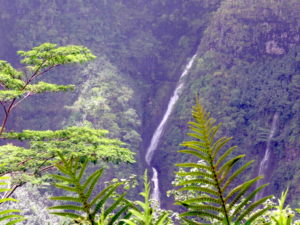
One look at that cliff and you come away with the impression that anybody who hadn’t spent the previous year or two high in the rigging of a heaving ship would have returned meekly to the Acushnet, sailed out his contract, and never enticed young boys to dream of tropical maidens.
Entering the Vale of the Typee from the rear, Melville and Toby crossed land that, probably, was farmed. But nowadays is indistinguishable from jungle.
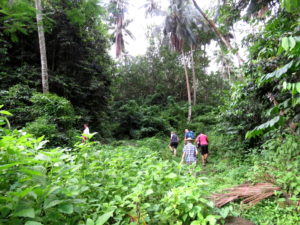
Or may never have ceased being jungle because it was taboo. With all the taboos being cast around at the time there must have been a lot of the Vale that was off limits.
Other parts of the woods were replete with gods,
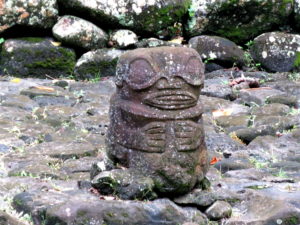
and platforms for sacred dances,
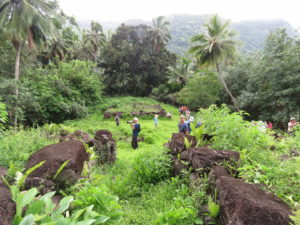
now, mostly, fallen into disrepair. This may have something to do with missionaries but, more likely, with the smallpox that almost annihilated the inhabitants a generation after Melville wrote his book.
Genuine farmland is lower down. As are pigs,
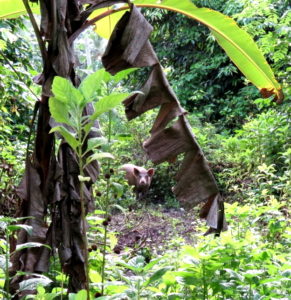
which we hoped were domestic given the evil reputation of their wild relations.
On the other hand, maybe we’re the ones who look fearsome to pigs. I don’t mean Sam and Charlotte and Peggy and me. We’re the least fearsome-looking people you could conjure. Nuns are scarier-looking than we are. It’s the islanders who’re fearsome looking.
In the fearsomeness department, a Typee could scare the wildest of wild boars back through the jungle and up the cliff to take his porcine snout to parts less scary. In fact, any one of those islanders could make Dwayne, “The Rock” Johnson and Hulk Hogan together give up wrestling and go into ballet as a more appropriate career option.
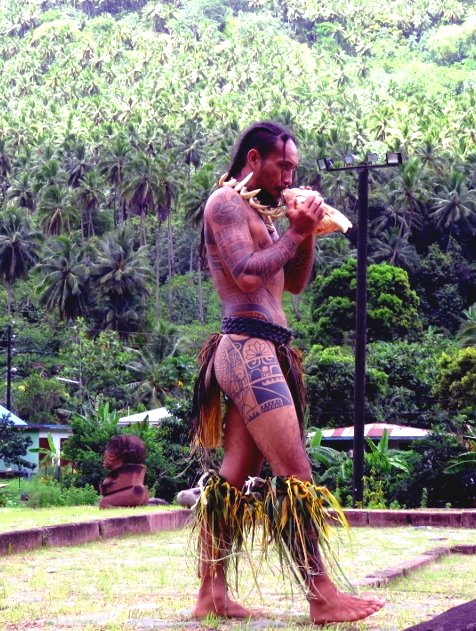
Even the old men
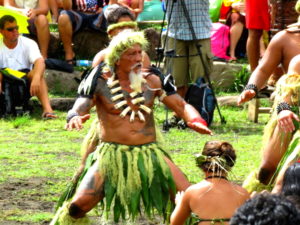
out-Hulked Hulk Hogan for scary.
But the ladies, the ladies were a different story. The ladies didn’t look one bit like Nineteenth Centuries fantasies of Fayaway. Some of them didn’t even look completely awake.

But it’s hard to blame them. Modern times have reached into the Vale of the Typee and affected their choice of apparel. Still, the teen-aged part of myself couldn’t help wishing they’d stop it already with this cultural appropriation of Western ways and display a bit more pride in their sartorial heritage.


No Comments